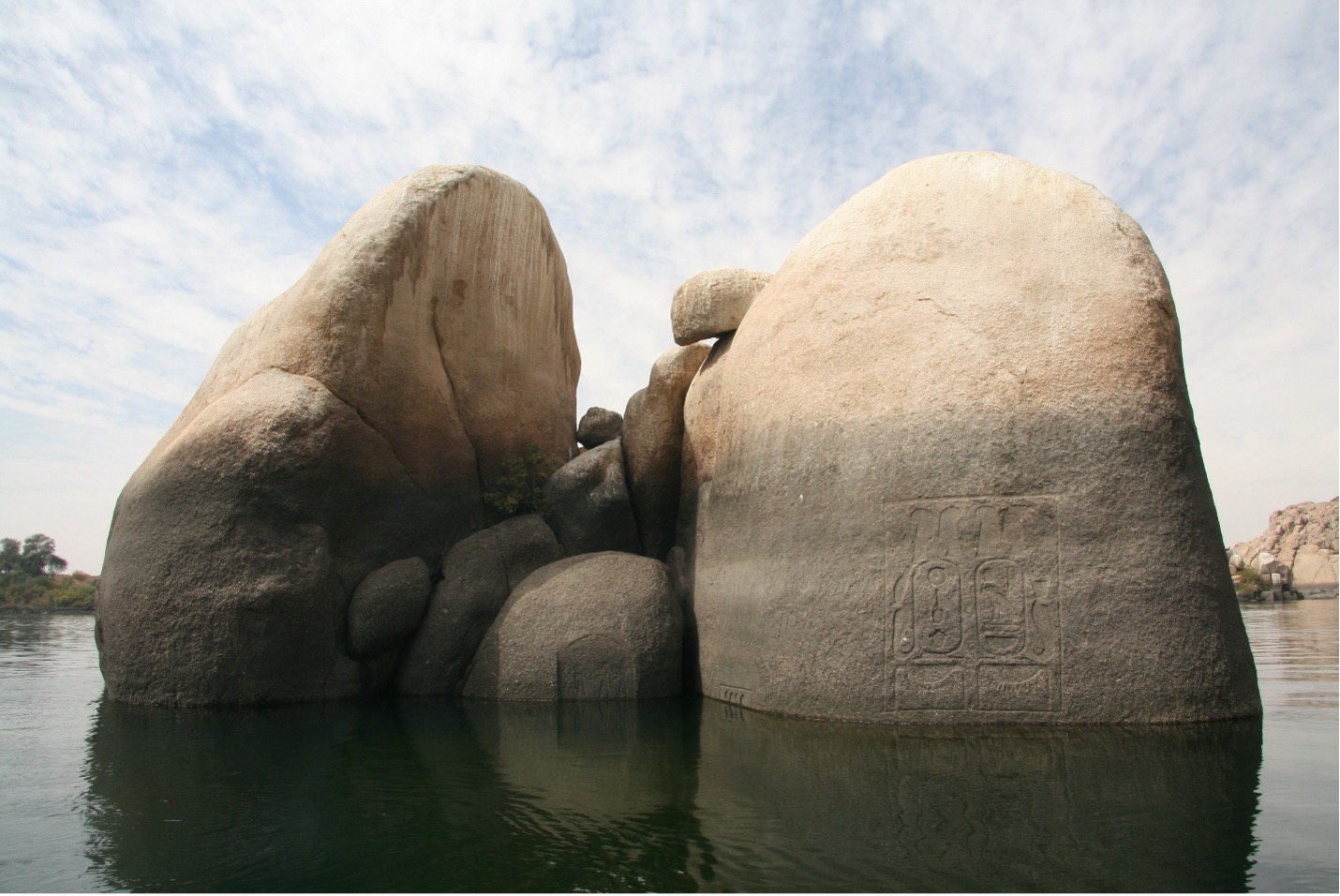Words in the Landscape: The Mechanics of Egyptian Royal Living-Rock Stelae by Jennifer Thum
In support of my PhD dissertation in Archaeology and the Ancient World at Brown University, I was fortunate enough to have been the recipient of an ECA Fellowship from ARCE, a Mellon Mediterranean Regional Research Fellowship from CAORC, and ARCE’s Theodore N. Romanoff Prize. This generous funding allowed me to visit Egypt and participate in the most crucial component of my dissertation research: seeing the monuments at the center of my study in person, embedded in the landscapes where they were carved thousands of years ago.
Jennifer Thum in front of Stela A at Amarna—a living-rock boundary stela—in January 2017.
My PhD project, Words in the Landscape: The Mechanics of Egyptian Royal Living-Rock Stelae, centered on a group of royal monuments that were carved directly into living rock, or stone that is still in situ. These stelae had never been studied together as a group before, but they included several well-known royal messages and were clearly part of carefully planned royal programs. So I wanted to know: what circumstances would lead a king to commission a stela in living rock, and what might that choice tell us about how the medium of living rock was conceptualized more broadly in ancient Egypt? In order to better understand the mechanics of these stelae, it was essential for me to investigate their materiality and contexts—and that was something that I could only do through first-hand experiences with them in the landscapes they were designed for. The support ARCE gave me allowed me to visit a number of the sites of living-rock stelae, and to determine that such monuments were carved into conspicuous natural features, and situated in landscapes where the perceived permanence and immobility of living rock was suited to their messages.
Konosso as seen from a motorboat in February 2018.
Some of the most memorable encounters I had with the stelae during my time in Egypt were my visits to Konosso, a small island at the First Cataract, which is now almost entirely submerged. It is safe to say that this site has become the emblem for my research on the stelae, and with good reason: it is the location of several rather famous royal monuments, and images from the 19th century reveal that it once took the conspicuous shape of a pylon—entirely appropriate as a royal-monumental canvas at this gateway between Egypt and Nubia. My visits to Konosso also gave me the opportunity to understand how the island figures in the local landscape today as I formed relationships with Egyptian colleagues who shared these experiences with me and could explain how they see its place in that landscape.
A view of Konosso from Karl Richard Lepsius’s Denkmäler aus Ägypten und Äthiopien, published in the mid-19th century.
The experiences I had at the sites of the stelae, my subsequent understanding of these monuments, and the fantastic images I was able to capture of them in their landscapes have contributed a great deal to a variety of conference papers and publications on topics ranging from Egyptian geologics and geoaesthetics, to sensory experiences with the landscapes of Egyptian stelae, to the relationship between living rock and time.
Beyond this, my time in Egypt was invaluable for the proximity it gave me to other research centers and libraries, lecture series, and the active community of Egyptologists working in Cairo and beyond. I had the opportunity to deliver a lecture on my research at the ARCE Cairo Center, and to deliver the inaugural Theodore N. Romanoff lecture for the ARCE NY Chapter when I returned.
Since 2018 I have been a staff member at the Harvard Art Museums, where I am currently Assistant Director of Academic Engagement and Assistant Research Curator. The lessons I learned through my research about foregrounding materiality and context ring as true in my interactions with objects in the museums’ collections as they did with the stelae: although the objects I am currently studying are no longer in situ, the way I approach them—and the way I’ve learned to talk about them with students and the public, thanks to the many opportunities ARCE gave me to speak about my PhD project—is likewise grounded in both the ancient context and our own relationships to the tangible past.


